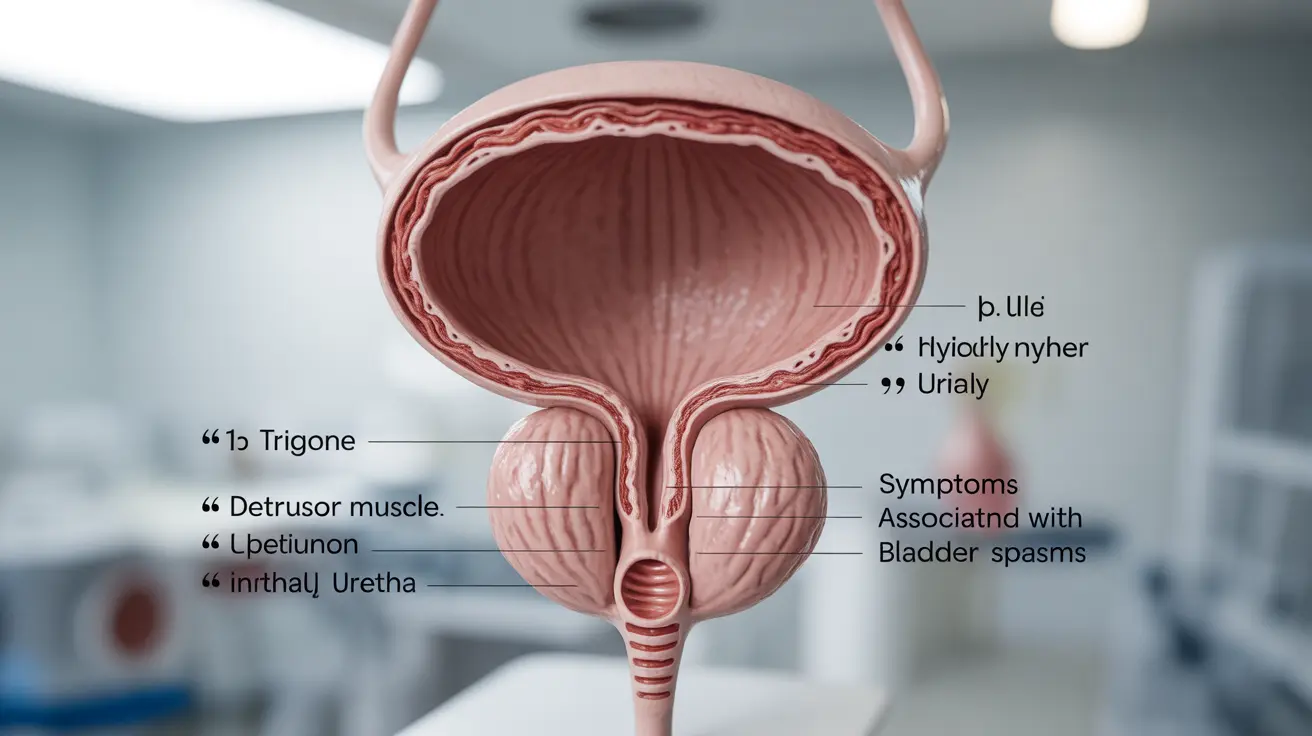Bladder spasms can be an uncomfortable and disruptive condition that affects many people, causing sudden, involuntary contractions of the bladder muscles. These contractions can lead to urgent needs to urinate and may significantly impact daily life. Understanding the causes, symptoms, and available treatments is crucial for managing this condition effectively.
While bladder spasms share some similarities with other urinary conditions, they have distinct characteristics and require specific approaches for diagnosis and treatment. This comprehensive guide will help you understand what bladder spasms are and how to manage them effectively.
Understanding Bladder Spasms and Their Symptoms
Bladder spasms occur when the bladder muscles contract involuntarily, often causing a sudden and intense urge to urinate. These contractions can happen even when your bladder isn't full, leading to frequent bathroom visits and potential leakage.
Common symptoms include:
- Sudden, strong urges to urinate
- Lower abdominal cramping
- Incontinence or leakage
- Pain or discomfort in the lower abdomen
- Increased frequency of urination
- Burning sensation during urination
Causes and Risk Factors
Several factors can contribute to the development of bladder spasms:
Medical Conditions
Various underlying conditions may trigger bladder spasms, including:
- Urinary tract infections (UTIs)
- Neurological disorders
- Bladder obstruction
- Pelvic floor dysfunction
- Multiple sclerosis
- Spinal cord injuries
Lifestyle Factors
Certain lifestyle choices and habits can increase the likelihood of experiencing bladder spasms:
- Consuming bladder irritants (caffeine, alcohol, acidic foods)
- Dehydration
- Poor bathroom habits
- Excessive fluid intake before bedtime
Diagnostic Process
Healthcare providers use various methods to diagnose bladder spasms and determine their underlying cause. The diagnostic process typically includes:
Physical Examination and Medical History
Your doctor will conduct a thorough physical examination and review your medical history, including any symptoms you've experienced and their duration.
Diagnostic Tests
Common diagnostic procedures may include:
- Urinalysis
- Bladder function tests
- Ultrasound imaging
- Cystoscopy
- Urodynamic testing
Treatment Approaches
Treatment for bladder spasms often involves a combination of approaches, depending on the underlying cause and severity of symptoms:
Medications
Several medications can help manage bladder spasms:
- Anticholinergics
- Muscle relaxants
- Antispasmodics
- Botulinum toxin (Botox) injections
Lifestyle Modifications
Making certain lifestyle changes can significantly improve symptoms:
- Bladder training exercises
- Pelvic floor strengthening
- Dietary modifications
- Timed voiding schedules
Frequently Asked Questions
What are the symptoms of bladder spasms, and how do they differ from overactive bladder? Bladder spasms typically cause sudden, intense urges to urinate accompanied by cramping or pain, while overactive bladder generally presents with frequent urination without the characteristic cramping. Spasms tend to be more acute and painful compared to the general urgency associated with overactive bladder.
How are bladder spasms typically diagnosed, and what tests are used to determine their cause? Diagnosis typically involves a combination of physical examination, medical history review, urinalysis, and specialized tests like urodynamic studies or cystoscopy. These tests help determine the underlying cause and rule out other conditions.
What are the most effective treatments for bladder spasms, and can they be managed at home? Effective treatments include medications, lifestyle modifications, and pelvic floor exercises. Home management strategies include bladder training, dietary changes, and maintaining proper hydration. Severe cases may require medical intervention like Botox injections or other specialized treatments.
Can certain foods or drinks trigger bladder spasms, and how can dietary changes help prevent them? Yes, common triggers include caffeine, alcohol, acidic foods, and artificial sweeteners. Maintaining a bladder-friendly diet by avoiding these triggers and staying properly hydrated can help prevent spasms.
What are the benefits and risks of using Botox injections to treat bladder spasms? Botox injections can provide significant relief from bladder spasms by relaxing the bladder muscles. Benefits include reduced frequency and intensity of spasms, while risks may include urinary retention, infection, or difficulty emptying the bladder completely.




